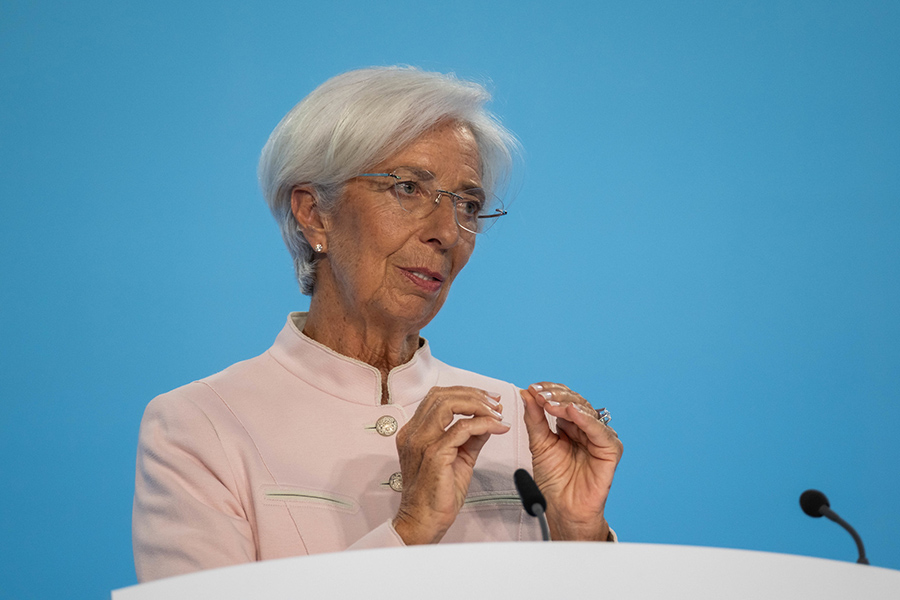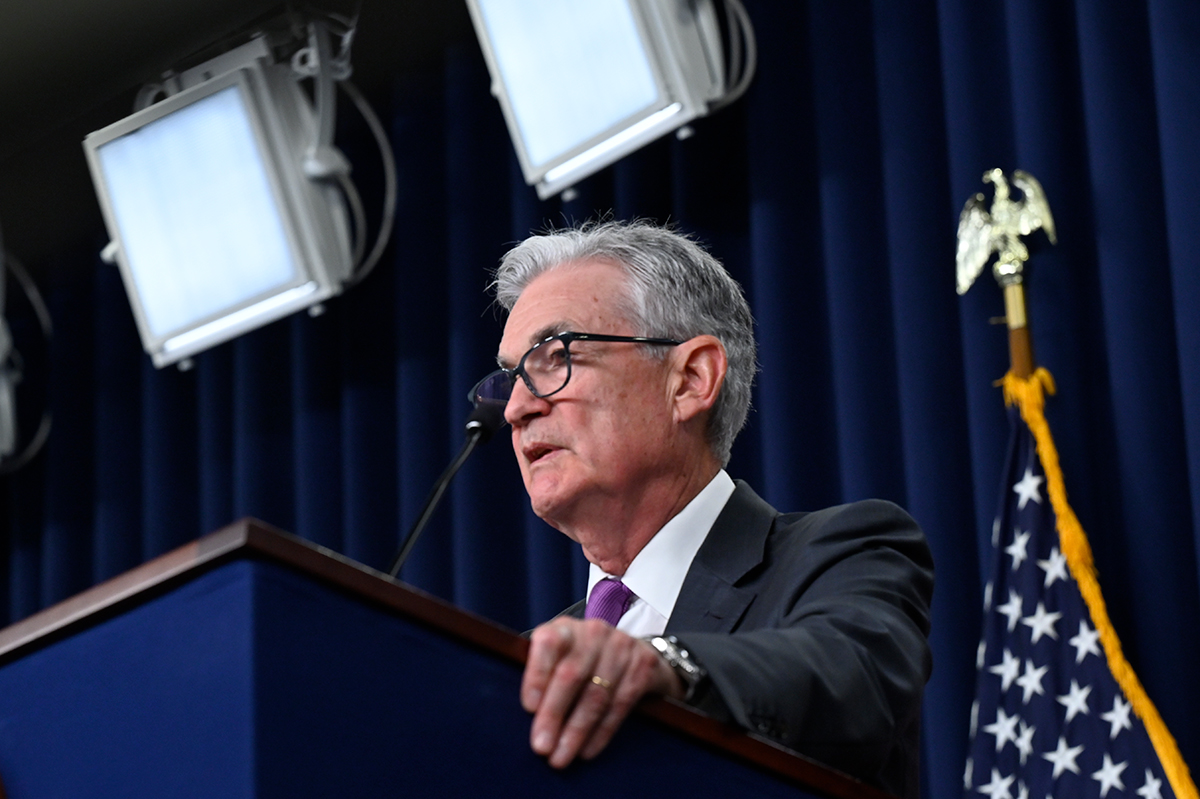The American dollar is climbing higher, strengthening against the euro and other European currencies. What does this mean? What will it influence? Is a cheaper euro or British pound a good thing? Over the past three months, by mid-September, the Dollar Index (DXY) has surged by 5.4%. The DXY is a crucial indicator as it measures the strength of the dollar against other major world currencies, including the euro, yen, and British pound.
Financial analysts are confident that the dollar rally has not yet reached its peak. While the European Central Bank reluctantly raises interest rates again and China hastily prepares for a recession, the U.S. economy is demonstrating impressive resilience to the crisis.
US wakes lightning fast
The dollar began its ascent back in July, following the release of U.S. Labor Department data on inflation. In June, the consumer price index increased by only 3% year-on-year, the lowest level since the summer of 2022. Additionally, U.S. GDP grew by 2.4% in the second quarter, surprising pessimists whose expectations were nearly a third lower.
In August, the rise of the dollar gained even more momentum, fueled by refreshing economic statistics. In September, the DXY index even reached a high not seen since February 2023.
The latest surge in the strength of the American currency was driven by retail sales data. The U.S. Department of Commerce reported that in July, retail sales increased by 0.6%, three times higher than expected. Furthermore, the core inflation rate in August was 3.7% year-on-year, nearly in line with expectations.
The labour market has also contributed to this positive trend, with the number of new jobs increasing by 187,000 in August, the same as in July. Even President Joe Biden, who had his doubts, acknowledged that America is going through one of the most significant periods of “job creation” in its history.
These numbers are more than just statistics. They suggest that Americans are starting to spend more money on daily purchases, which fuels economic growth and contributes to the strengthening of the dollar.
The Fed Takes a Break
Confidence in the U.S. economy is growing steadily. The International Monetary Fund (IMF) improved its GDP growth forecast for the United States in 2023 by 0.2 percentage points to 1.8%. Fitch Ratings, the rating agency, is even more optimistic. In its September report, it stated that the growth forecast for the American economy in 2023 has been upgraded by 0.8 percentage points to 2%.
Now, we await the results of the next Federal Reserve (Fed) meeting, to be announced on the 20th of September evening. If the Federal Reserve decides on another interest rate hike, it could boost interest in U.S. Treasury bonds. Currently, U.S. Treasury bonds already offer yields ranging from 4.4% to 5.5%.
However, most experts agree that the Federal Reserve, encouraged by accelerated GDP growth and slowing inflation, is unlikely to change its key interest rates and will keep them in the 5.25-5.5% range. This is a 22-year high, by the way!
It’s possible that there won’t be any more rate hikes by the end of the year. In early 2024, the Fed may even seriously consider easing its monetary policy. If, at the same time, the Bank of England and the European Central Bank do not start lowering rates, the dollar could start to weaken against the pound and the euro.
Foreign Troubles Turn Beneficial
The surge in the dollar’s strength is partly due to the weakness of other currencies. Unlike the Federal Reserve, the European Central Bank (ECB) didn’t hold back. On September 14th, the ECB made the decision to increase its key interest rates by 25 basis points to 4-4.75%. These new rates took effect on September 20th.
ECB President Christine Lagarde is vowing to keep interest rates at this level for as long as necessary, even if it dampens economic activity. All of this is aimed at curbing inflation and returning it to the target of around 2%. Although, according to ECB forecasts, this may not happen before 2025. In 2023, inflation is expected to be around 5.6%.
The euro didn’t react positively to these moves by the ECB. It immediately lost over 1% against the dollar and fell below the 1.07 EUR/USD level.
The news isn’t great for the British pound either. The Bank of England is scheduled to meet on September 21st, and there may be another interest rate hike, taking rates to a record level of 5.5%. The British central bank continues to raise rates to combat the highest inflation among major economies. In the third quarter, preliminary estimates put inflation in the UK at 6.8%. As a result, the pound has weakened, dropping 1.1% against the dollar from September 14th to 19th, settling at 1.238 GBP/USD.
Now, what about the Chinese yuan? The threat of a Chinese economic slowdown hasn’t disappeared. Despite diminishing deflationary pressure and increased demand for housing loans, the People’s Bank of China (PBOC) is deeply concerned about the devaluation of the yuan. Since the beginning of the year, the Chinese currency has devalued by nearly 10%, with over 7 yuan to the dollar.
In light of this, the PBOC intends to tightly control the purchase of dollars by local companies. Businesses looking to purchase $50 million or more will need special permission from the Chinese central bank. The PBOC has also asked Chinese banks to reduce their dollar purchases or delay large transactions to avoid further weakening the yuan.
However, the situation for the dollar could change rapidly, and not in its favor. Analysts explain that the dollar’s growth potential is nearly exhausted, as it has been strengthening for almost 2.5 years, albeit with interruptions. From May 2021 to September 2022, the dollar strengthened against the euro from 1.2264 to 0.9565. Then, it declined until July 2023 to 1.1255 against the euro, and now it’s strengthening again.
But right now, there are no major factors supporting further dollar appreciation. Unless the Federal Reserve continues to raise rates.

Photo: Christine Lagarde, President of the ECB, stated, “Based on our current assessment, we consider that the key ECB interest rates have reached levels that, maintained for a sufficiently long duration, will make a substantial contribution to the timely return of inflation to our target.” Source: ECB
And the Consequences
When the euro and pound depreciate significantly against the dollar, it’s bad news for buyers, especially for petrol and diesel buyers. However, it’s good news for those seeking employment, though not immediately, but in the near future. The depreciation of the British pound and euro enhances the competitiveness of European exporters. When British and European goods sell more, it leads to more job opportunities in these countries. But this won’t happen right away; it will take some time.
Furthermore, more American and Japanese tourists will come to Europe. This is excellent news for countries like France, Italy, and Spain, which are still recovering from the blow COVID-19 dealt to European tourism business. But what about Chinese tourists? There probably won’t be significantly more of them. If anything, there might be fewer, given that China is heading towards stagnation, and the yuan is depreciating.
It’s crucial to understand that right now, as central banks raise their interest rates sky-high, we’re seeing record-high loan rates across the board. This applies to all loans, from mortgages to car loans to credit cards. As central banks potentially lower rates in the future (which is inevitable), loans will become cheaper, but later.
Most importantly, the current fluctuations aren’t that impressive compared to last year. A year ago, the dollar was nearly 11% stronger against the euro, and nothing particularly alarming happened. Contrast that with the summer of 2008, during the peak of the mortgage crisis, when the dollar was exceptionally weak, trading at 1.6 dollars to the euro, which is almost one and a half times cheaper than now. That was truly terrifying.
Source: The Gaze







